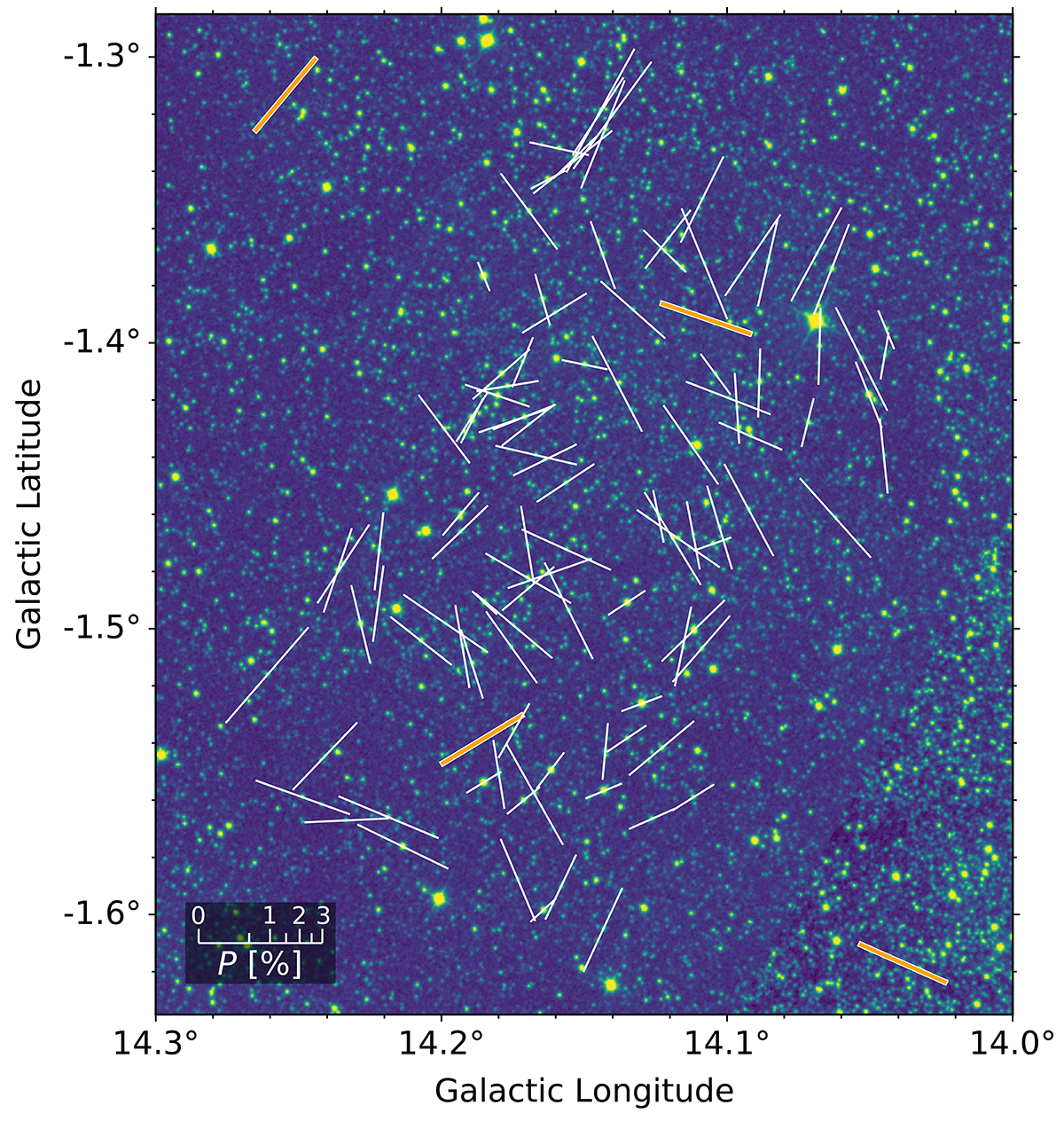Our surprising magnetic galaxy The first 3D map of magnetic fields in our galaxy explains star-forming regions Research news


Mapping magnetic fields. The white lines superimposed on this image of the Sagittarius arm of the Milky Way show the polarization, or orientation, of light. This correlates with the orientation of local magnetic field lines. Combined, this information builds a detailed map of the magnetic field in that arm of the galaxy. ©2023 Doi et al. CC BY ND
A team of astronomers including those from the University of Tokyo created the first-ever map of magnetic field structures within a spiral arm of our Milky Way galaxy. Previous studies on galactic magnetic fields only gave a very general picture, but the new study reveals that magnetic fields in the spiral arms of our galaxy break away from this general picture significantly and are tilted away from the galactic average by a high degree. The findings suggest magnetic fields strongly impact star-forming regions which means they played a part in the creation of our own solar system.
It might come as a surprise to some that magnetic fields can exist on scales larger than a planet. Most of our daily experience with magnetic fields involves either sticking things to our refrigerator, or perhaps using a compass to point north. The latter shows the existence of magnetic fields generated by our planet. Our sun also creates a vast magnetic field, and this can affect phenomena like solar flares. But magnetic fields that span the galaxy are almost too large to comprehend, and yet they likely have a role in the formation of stars and planets.
“Until now, all observations of magnetic fields within the Milky Way led to a very limited model that was uniform all over and largely matched the disc shape of the galaxy itself,” said Assistant Professor Yasuo Doi from the Department of Earth Science and Astronomy. “Thanks in part to telescope facilities at Hiroshima University capable of measuring polarized light to help us ascertain magnetic signatures, and the Gaia satellite launched by the European Space Agency in 2013, which specialized in measuring the distances to stars, we are able to build a better model with finer details in three dimensions. We focused on a specific area, the Sagittarius arm of our spiral galaxy (we are in the neighboring Orion arm) and found the dominant magnetic field there breaks away from the plane of the galaxy significantly.”
Previous models and observations could only imagine a smooth and largely homogeneous magnetic field in our galaxy; whereas the new data show that although magnetic field lines in the spiral arms do roughly align with the galaxy at large, at small scales the lines are actually spread out across a range of distances due to various astrophysical phenomena such as supernovae and stellar winds. The galactic magnetic fields are also incredibly weak, around 100,000 times weaker than Earth’s own magnetic field. Despite this, however, over long time spans, gas and dust in interstellar space are accelerated by these fields which explains the presence of some stellar nurseries — star-forming regions — that cannot be explained by gravity alone. This finding implies further mapping of the magnetic fields within our galaxy could help better explain the nature and evolution of the Milky Way and other galaxies too.
“I am personally intrigued by the foundational process of star formation, pivotal to the creation of life, including ourselves, and I aim to grasp this phenomenon in its entirety with time,” said Doi. “We aim to further our observations and build better models of galactic magnetic field structures. This endeavor aims to provide observational insights into the accumulation of gas fueling active star formation within our galaxy and its historical development.”
Papers
Yasuo Doi, Kengo Nakamura, Koji S. Kawabata, Masafumi Matsumura, Hiroshi Akitaya, Simon Coude, Claudia V. Rodrigues, Jungmi Kwon, Motohide Tamura, Mehrnoosh Tahani, Antonio Mario Magalhaes, Reinaldo Santos-Lima, Yenifer Angarita, Jose Versteeg, Marijke Haverkorn, Tetsuo Hasegawa, Sarah Sadavoy, Doris Arzoumanian, and Pierre Bastien, "Tomographic Imaging of the Sagittarius Spiral Arm’s Magnetic Field Structure," The Astrophysical Journal: January 11, 2024, doi:10.3847/1538-4357/ad0fe2.
Link (Publication )
)





